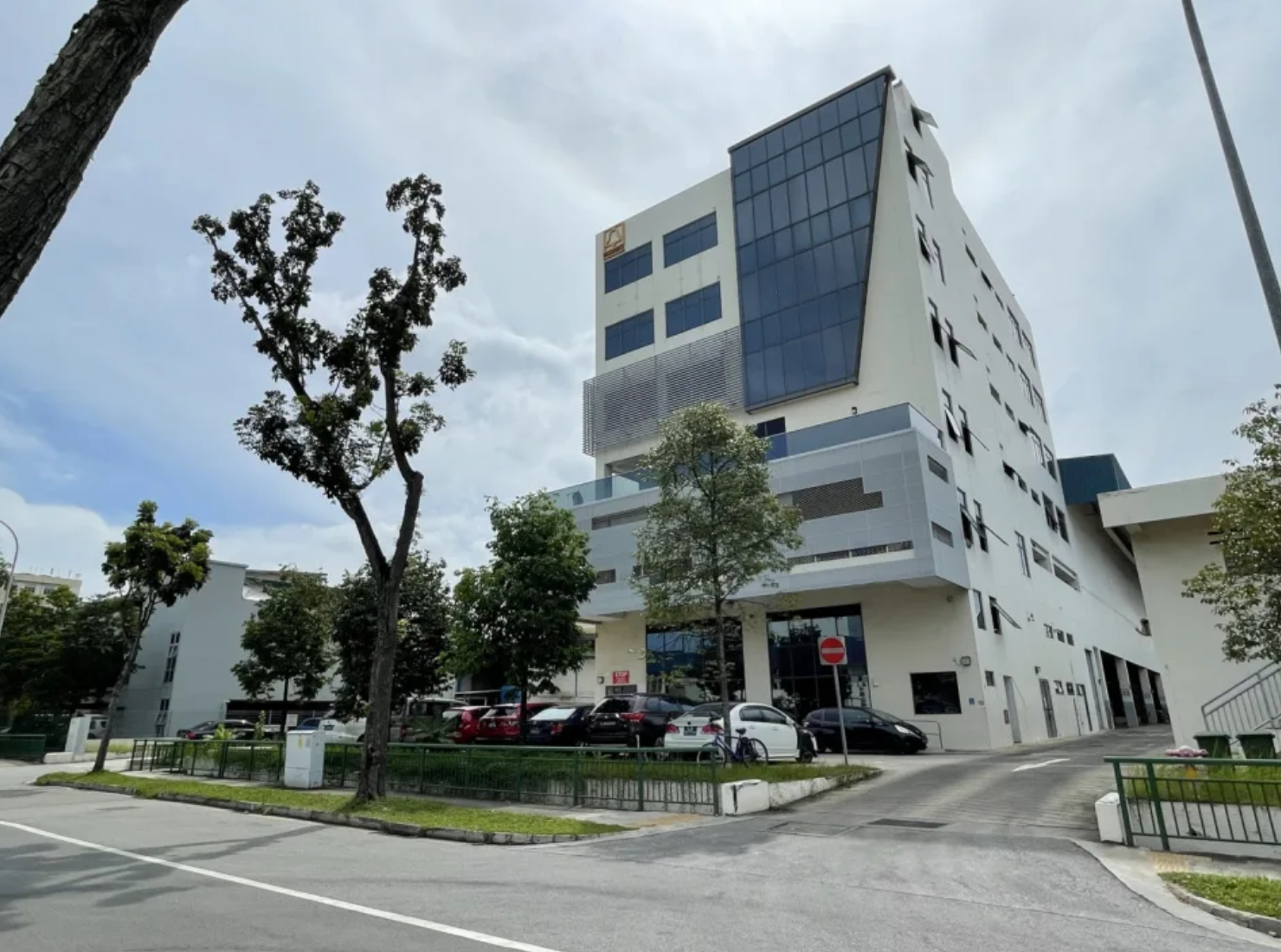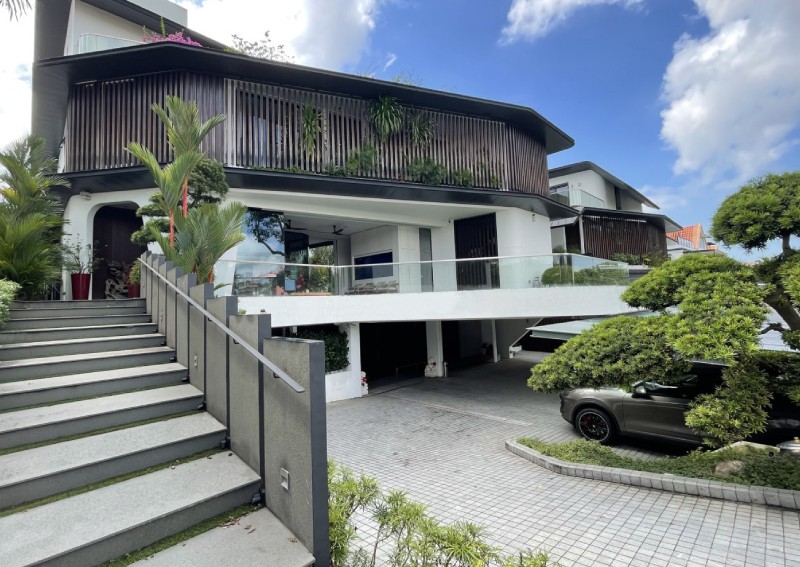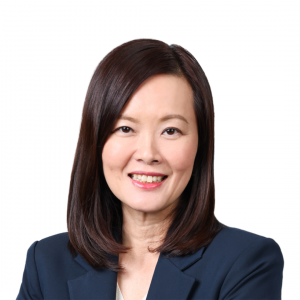Sentosa Island–Singapore’s waterfront playground where homeowners park yachts outside front doors–turns 50 years old this year. Formerly known as Pulau Belakang Mati, the nearly two-square-mile isle sits at the southern end of mainland Singapore–minutes away via cable car, auto, public transport, bicycle, moving walkway, or a garden-themed boardwalk.
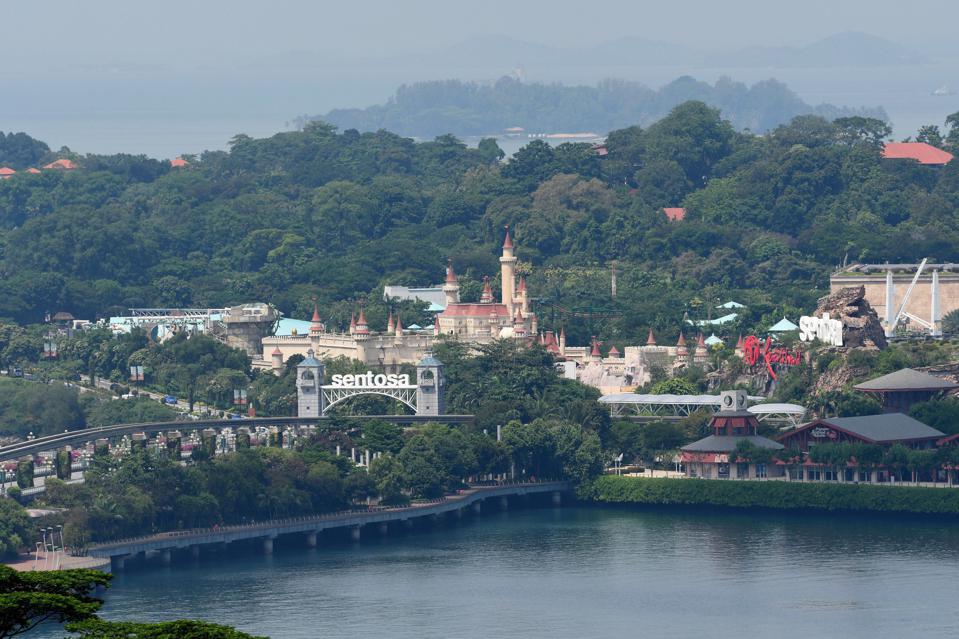
Singapore’s government has infused Sentosa (“peace and tranquility”) with $1 billion-plus in development since it unveiled a master plan in 1972. Now, the lush island’s awash in diversionary delights–from marinas, mint beaches, golf courses, and spas to Resorts World Singapore with its casino, waterpark, Universal Studios Singapore, and S.E.A. (South East Asia) Aquarium, one of the world’s largest.
Some call Sentosa the “Monte Carlo of Asia.”

Thirty years ago–given land-scarce Singapore–it made sense to reclaim land on the isle’s eastern edge and pop in five more islands. Islands within an island? Welcome to Sentosa Cove, Sentosa Island’s palmy enclave of bungalows, villas, and condos that was first conceptualized in 1992. 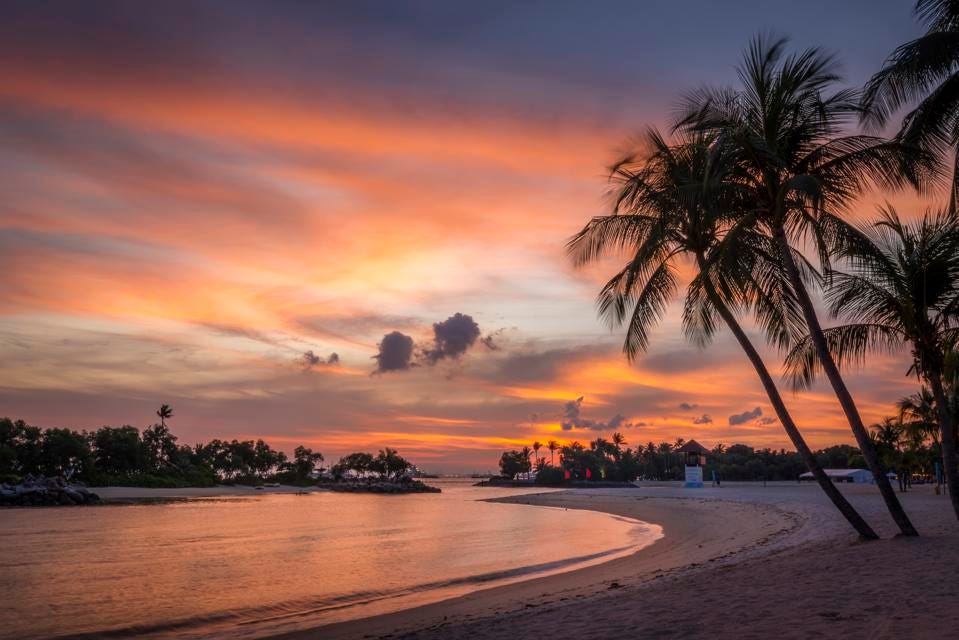
The residential marina community of about 2,100 homes (about 16% are landed properties, the remainder are condos) is now fully developed; the first residence was constructed in 2006. Around 6,000 call the nearly 300-acre gated community rumah (“home” in Malay, one of four commonly used languages in Singapore that includes Mandarin, Tamil, and English).
Sentosa Cove is the only spot in Singapore, favored for its political stability, high GDP, and low unemployment, where non-permanent residents can buy landed property (with a 99 years leasehold).

Bentleys, Porsches, Jaguars—you’ll find them tooling down Ocean Drive, one of the Cove’s main thoroughfares lined with condo high-rises and tropical homes edging the Singapore Strait. Bicycles also predominate but don’t bother locking them up. Sentosa Island and its residential zone enjoy the same squeaky clean-super-safe stature as mainland Singapore. 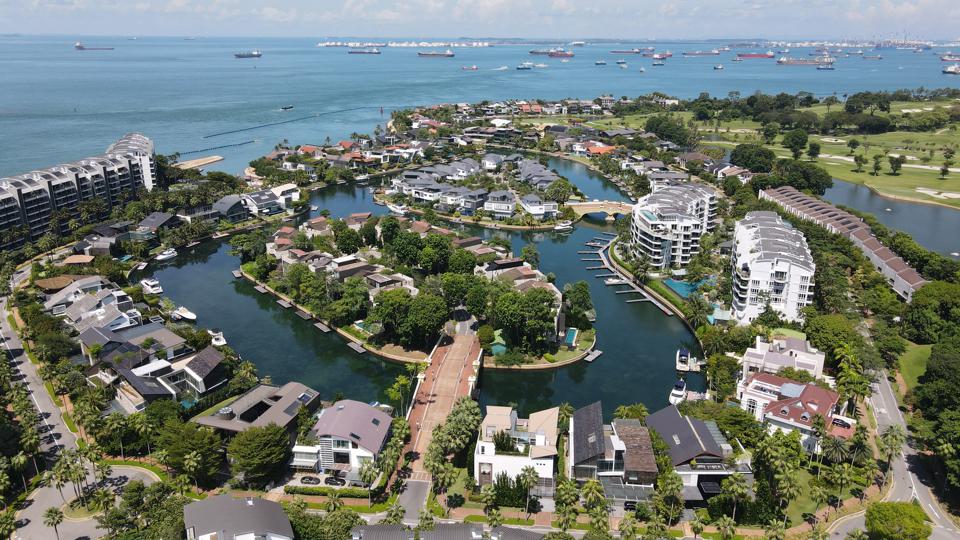
The Cove appears to be making a comeback after a pre-pandemic downturn. Sales for 2021 were $610 million, up 72% from 2020, but still below the Cove’s peak performance from 2010-2012 when a top oceanfront bungalow was priced at $3,214 per square foot. Currently, renovated bungalows hover just above $2,000 per square foot.
Fortifying the resurgence is the Greater Southern Waterfront, the redevelopment of 30km of mainland and Sentosa Island coastline. Housing, offices, nature parks, green belts, and beaches are planned. Nearing completion is the fanciful S$90 million Sentosa Sensoryscape walkway, an “experiential sensory public park” that includes sculptures and water features. The linkway is part of an additional boost, the Sentosa-Brani Master Plan.
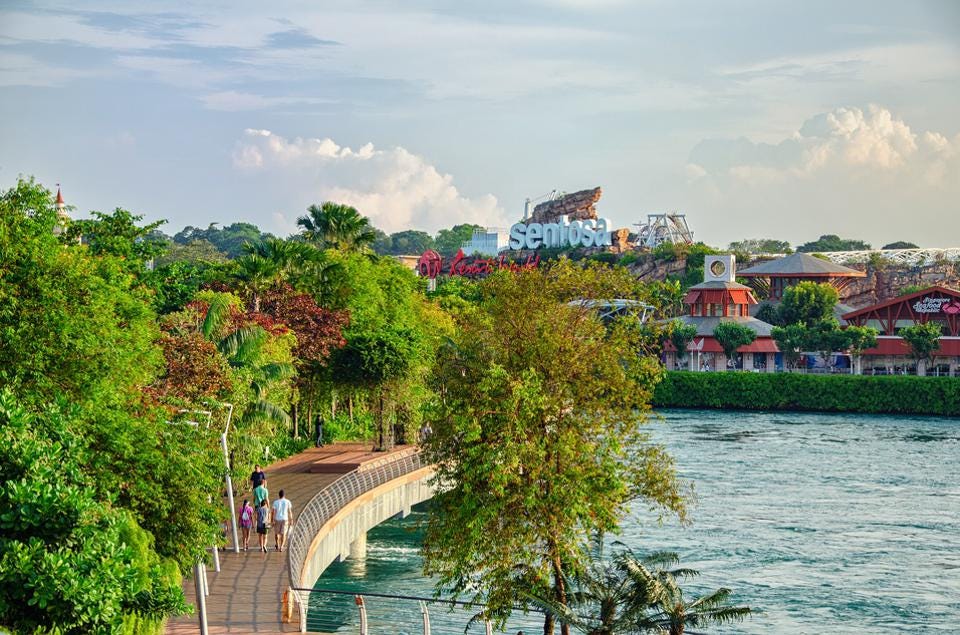
About 60% of Sentosa Cove buyers are foreigners, and those from Asian countries predominate. Taiwanese billionaire Hsu Chen recently flipped the “Copper House” for a profit gain of $11 million-plus after just two years of ownership (although less given taxes). In 1992, Chen co founded Hsu Fu Chi, which makes confectionery products. 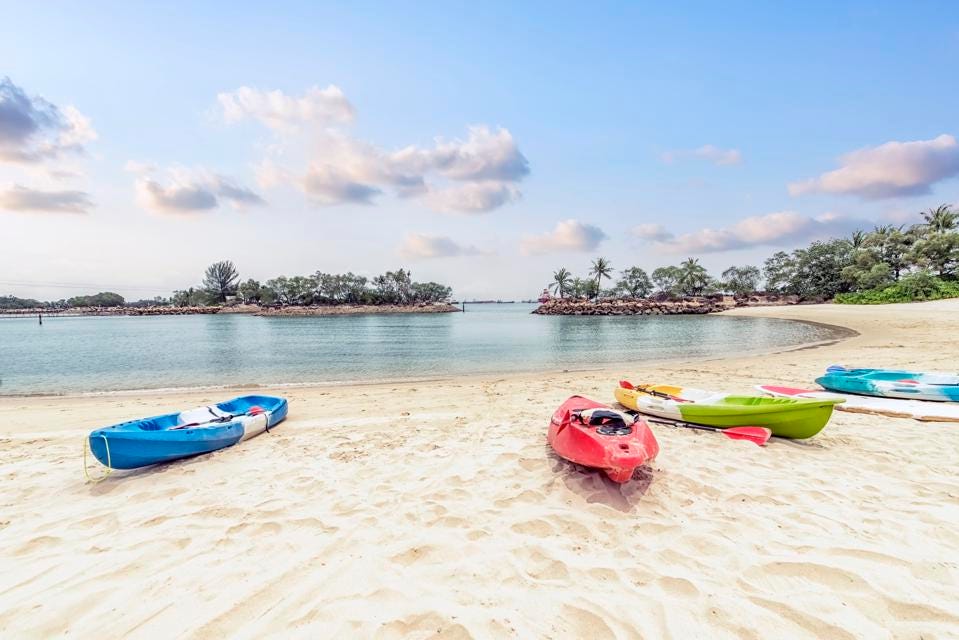
Other billionaires favor eccentric home designs, including such Cove oddities as a pirate-themed and an Egyptian-themed house, the latter reportedly owned by a Singaporean (a kitschy front door flanks towering Anubis statues set with glowing red eyes). Villa Mistral dubbed the “Yacht House,” mimics the intrepid contours of a luxury super yacht slicing through the ocean.
“Clusters of foreigners buy property in Sentosa––their family and friends are here, so they tend to gather and build small communities within Sentosa,” says Sammi Lim, founder and executive director of Brilliance Capital. “Once you’re home, you don’t really want to go out.”
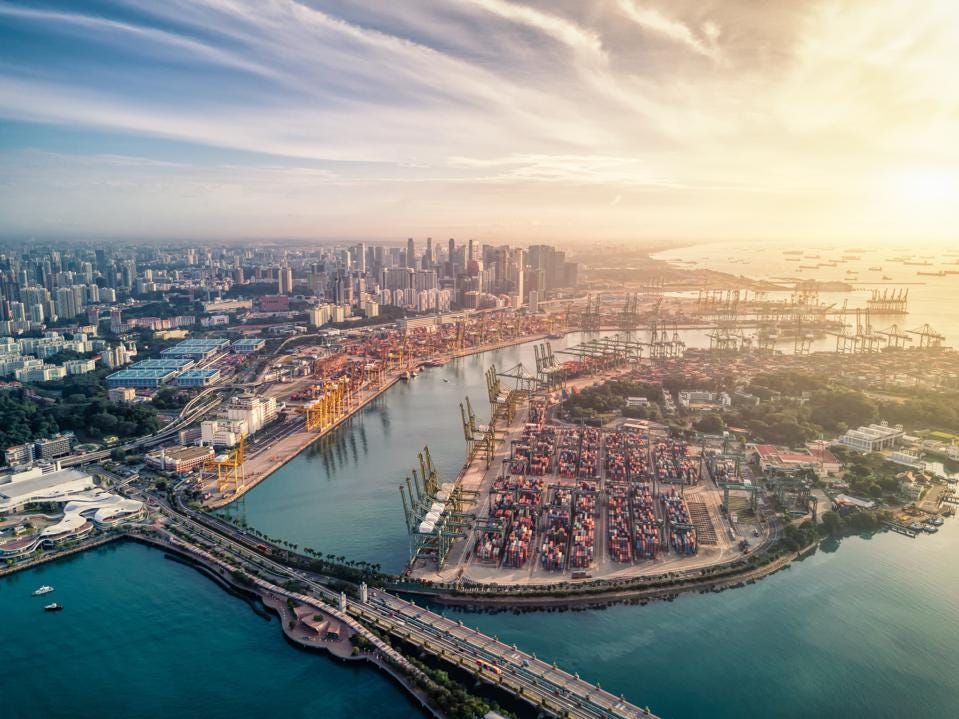
The W Singapore and Residences divide Sentosa Cove north from south along with ONE°15 Marina, and the 40,000 square foot Quayside Isle (not another island, but a breezy shopping-dining complex). The North Cove has three islands, and the South has two. Homes on all five islands can berth yachts.
Each island has distinct architecture, which can’t be altered in terms of waterfront views and aesthetics.

South Cove harbors Sandy and Pearl Islands, both lined with signature homes with some stunning architecture. Sandy Island’s 18 villas are striking stone monoliths with two-story glass walls on observe sides. Designed by Italian architect Claudio Silvestrin, they resemble chic island temples amid a rainforest setting.
While these islands exist within the main island of Sentosa, Pearl Island pushes that concept one step further, setting each of 19 bungalows on shallow reflecting pools: “an island within an island,” according to marketing materials.

